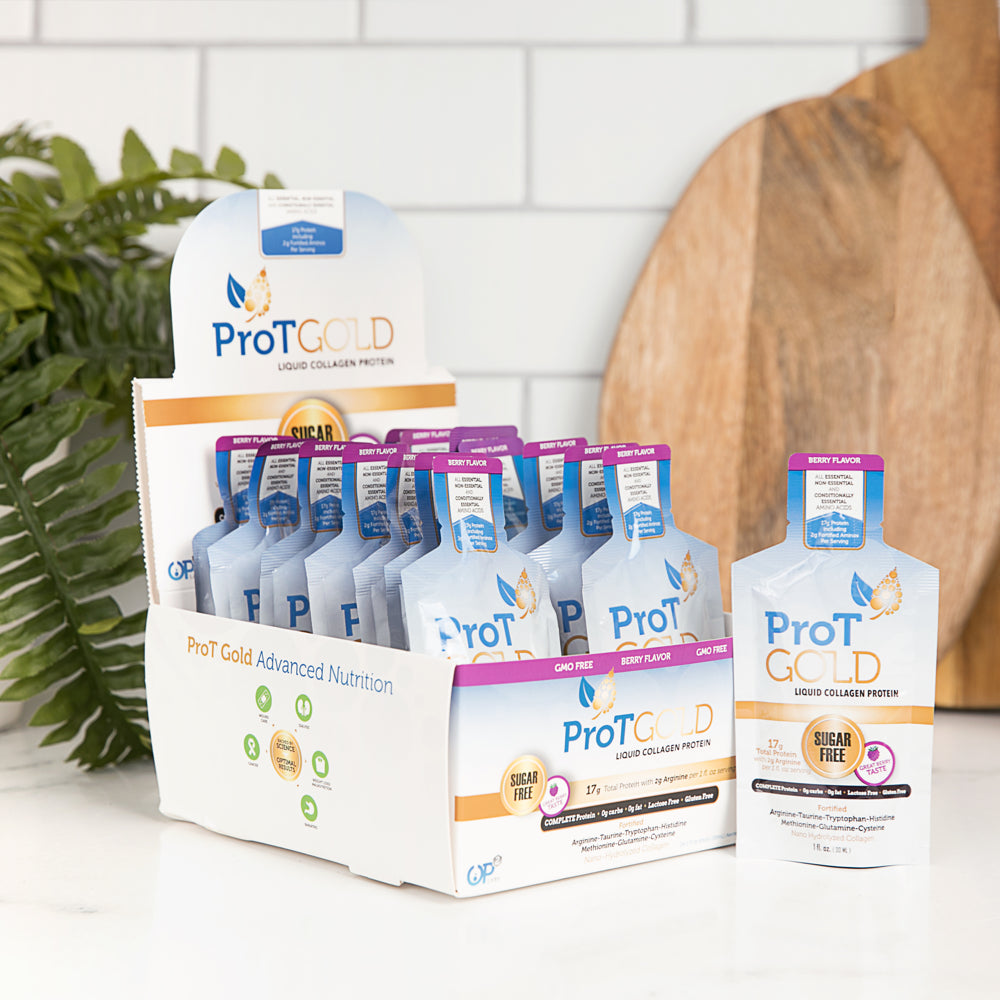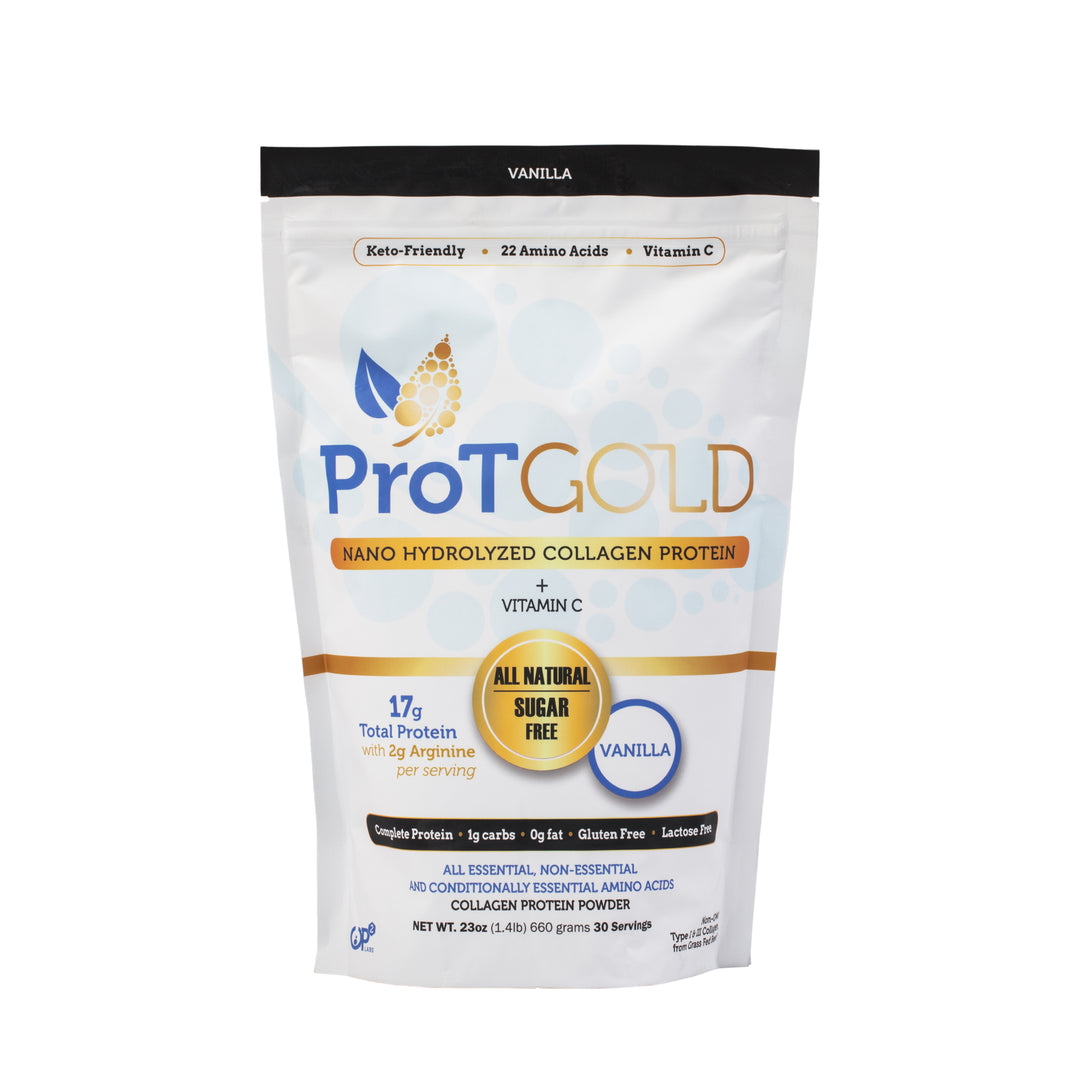How Can a Diabetic Wound Heal Faster?
When it comes to diabetic wound healing, sometimes it seems like you and your body are at an impasse. If you’ve been staring at an inflamed, angry wound for weeks on end, you’re probably wondering: “how can a diabetic wound heal faster!?”
Today, we’re here to help.
Living with diabetes often requires vigilance - checking your blood sugar, choosing the proper footwear, and carefully monitoring your diet. This vigilance is particularly necessary when it comes to diabetes wound healing.
If you want to learn how a diabetic wound can heal faster, it’s important to understand why your wounds have trouble healing in the first place. In this article, we’ll answer important questions like:
- Can you prevent diabetic wounds?
- And how can a diabetic wound heal faster?
Let’s examine what's going wrong during the diabetic wound healing process, and what you can do to learn how to heal diabetic wounds more quickly.
Why is diabetic wound healing so difficult?
Normally, wounds naturally heal within four weeks, but diabetic wounds can take a lot longer. The median healing time of a diabetic wound is around 6 months! This prolonged healing timeline is due to a number of factors, but most of them stem from high blood sugar (hyperglycemia).
If your blood sugar levels stay elevated for long periods of time it:
- May narrow your blood vessels
- May make your blood thicker and more difficult to pump
- May reduce the function of your white blood cells
- May impair new skin cell formation
- May make it more difficult to control bacterial infections
In addition, hyperglycemia can result in peripheral neuropathy (nerve damage in the hands and feet). This means that some people with diabetes don’t even realize when they receive wounds.
And, if you don’t catch wounds early on, it can result in infections and longer wound healing times.
But how do you know if your wound is having trouble healing? Let’s take a look at some common signs your diabetic wound needs some extra help.
Signs your diabetic wounds aren’t healing properly
If you want to know how a diabetic wound can heal faster, it’s important to understand the signs of improper wound healing. That way, you can implement some diabetic wound healing methods if any of those signs are present.
When healing diabetic foot ulcers, here are some signs of improper healing to look out for:
Inflammation that won’t go away
Inflammation is a completely normal part of your healing process - but it’s only supposed to last about a week.
If your wound is inflamed for longer than that, then you know something is going wrong with the healing process.
In addition, once inflammation goes away, it shouldn’t return. One of the struggles with healing diabetic foot ulcers is that the inflammation continues to reappear later in the healing process. This is a signal that the wound is infected and your body is having trouble healing the ulcer on its own.
Oozing pus or liquid
Another sign of improper wound healing is pus drainage. You should really only expect pus to drain from your wound in the first few days of healing - while your body is getting rid of any excess bacteria and debris.
If you experience pus or liquid oozing from your diabetic foot ulcers later into the healing process, this is a sign of improper healing.
Bad smells
Many people with diabetes cannot feel their foot ulcers because of neuropathy.
If you are one of them, you may not be able to rely on pain to tell you when your wound is infected. But you can sure rely on smell! An infected wound often has a strong smell, which can be sickly sweet or strong and putrid - a bit like ammonia.
If you notice a smell coming from your diabetic foot ulcer, it’s important to notify your doctor straight away.
Unusual colors
One problem people with diabetes need to be aware of is gangrene, which occurs when the blood supply to a large area of tissue is cut off. If you’ve been dealing with a chronic diabetic wound for a while, it’s possible for gangrene to set in.
Fortunately, this issue isn’t common, but it’s important to know what to look for.
Keep your eye out for unusual skin colors like blue, bronze, or greenish-black. You should also be aware of dark edges around your ulcer, as this can be a sign that the wound has taken a dangerous turn.
If caught early on, gangrene may be treatable by doctors. But, when not dealt with carefully, it might require amputation. In fact, around 6,000 people a year require amputation due to diabetes. That’s why it’s so important to know how a diabetic wound can heal faster.
So how can a diabetic wound heal faster?
There are many ways to approach the answer to this question, and the right method for healing diabetic foot ulcers and other wounds will differ from person to person. That being said, there are some proven methods and diabetic wound healing products you can discuss with your doctor as you learn the best way to heal your own diabetic wounds.
How can a diabetic wound heal faster?
If you want to learn how a diabetic wound can heal faster, these are the tips we recommend discussing with your medical health professional.
Catch wounds early
Prevention is the best defense against diabetic wounds, but if you can’t prevent them, your next best bet for how a diabetic wound can heal faster is addressing it as soon as it occurs.
To give yourself a head start on wound healing, do daily full-body checks to look for new wounds, scratches, blisters, or red, swollen areas.
Pay close attention to your hands and feet - and don’t forget to check in between your toes!
If you find a cut or sore, wash your hands with soap and water, rinse the wound with warm water, and apply an antibiotic ointment and bandage as soon as possible. Keeping cuts clean and covered is one of the simplest ways how a diabetic wound can heal faster.
Change wound dressings regularly
In order to keep your wound dressings working properly, it’s important to change them daily. This will help keep the wound moist, which is important because moist wounds heal faster than dry ones.
If a regular bandage and antibiotic ointment doesn’t cut it for you, you can ask your doctor how to heal diabetic wounds with more advanced wound dressings.
Wound dressings come in all sorts of forms. Among them, there are foam dressings that are ideal for wounds that leak and ooze a lot. There are alginate dressings that are great for preventing new bacteria growth. And there are hydrogel dressings that provide extra moisture to promote new cell growth.
Your doctor will know what type of wound dressing is best for you based on your biology and the stage of your wound healing process.
Monitor your blood glucose carefully
One of the most important tips for how a diabetic wound can heal faster is simply monitoring your blood sugar! Because hyperglycemia plays such a large role in affecting your wound healing, it’s important to keep your blood sugars within normal levels.
Monitoring your blood glucose carefully will ensure that you get more ample blood flow to your extremities and that your immune system has a better chance of fighting off infections.
Take the pressure off
If you keep putting pressure on your diabetic wounds, it may prolong the healing process.
In order to heal your wounds properly, you may need to offload them. Ask your doctor how a diabetic wound can heal faster with special shoe inserts or cut-outs designed specifically to offload your wound.
Keep wounds free of dead tissue
If you notice thick yellowish tissue over your wound, it could be one of the culprits impeding your healing. This biofilm doesn’t always clean away on its own, especially with diabetic wounds, so you might need to visit a doctor for “wound debridement.”
Wound debridement is a medical procedure to remove any dead, damaged, or infected tissue from your wound to keep it clean.
You shouldn’t attempt to try it on your own at home.
Ask about surgical options
If you have a wound that is particularly hard to heal, you might want to consider a skin graft or other surgical options. In recent years, bioengineered skin substitutes have been used to promote wound healing in people with diabetes.
Your podiatrist can discuss if surgery is best for your case, and what options are available to you.
Stay active
Regular exercise can improve your blood flow and help you keep your blood sugar levels under control. In addition, exercise may improve wound healing by reducing inflammation and increasing your antioxidant levels.
Exercising with diabetic wounds can be a bit of a balancing act.
You want to keep your body moving, but you don’t want to put pressure on your wounds or aggravate them. Speak with your doctor about what kinds of exercise will be most beneficial for you.
Stop smoking
Smokers with diabetes are more likely to develop chronic diabetic wounds.
Nicotine increases your blood sugar levels, which makes them even harder to control. There are also chemical in cigarettes that increase inflammation, which will make wounds more difficult to heal.
If you currently smoke, quitting is one of the ways how a diabetic wound can heal faster.
Adjust your diet
Ask your doctor or nutritionist how a diabetic wound can heal faster with medical nutrition therapy. Medical nutrition is overseen by a health professional, and is targeting diet and supplementation plan to help you achieve optimal health.
Medical nutrition may be effective in improving diabetic wound healing. That’s because your diet plays a major role in your health.
Adjusting your diet is just one of the ways how a diabetic wound can heal faster, but it can take time to find the right diet for you. Some common recommendation for people with diabetes include:
- Reducing carbohydrates
- Eliminating excess sugar
- Eating more fruits and vegetables that contain vitamin A and vitamin C
- Increasing your protein intake
Protein is one of the most important things for wound healing. That’s because your body needs protein to build new skin tissues with collagen fibrils. You can get protein through your diet, but your doctor might also recommend collagen supplements to ensure you get an adequate amount for wound healing.
Take medical-grade collagen supplements
If you aren’t getting enough protein from your diet alone, ask your doctor how a diabetic wound can heal faster with collagen protein drinks for diabetics. Supplementing with collagen protein helps to boost your body’s natural collagen production and provides you with all the amino acids you need to create new collagen fibrils for healing diabetic wounds.
But not all collagen supplements are created equal.
If you are using collagen supplements for wound healing, you want to ensure that they are from a trusted source that doesn’t add any sugars or preservatives to their product.
You also want to look for hydrolyzed collagen protein (also called collagen peptides) which will be easier for your body to absorb and digest. In addition, you can look for a medical-grade collagen supplement that has been approved for daily nutrition by medical facilities.
How is medical-grade collagen made?
Medical-grade collagen, like ProT Gold, undergoes rigorous FDA testing and is overseen by medical professionals. If a collagen supplement has been certified as medical-grade, you know it’s a product you can trust.
That being said, everyone’s body and needs are different, so you should ask your doctor or nutritionist how much collagen you should take to aid diabetic wound healing. When used in the suggested amount, medical-grade collagen may be one of the simplest ways how a diabetic wound can heal faster.
ProT Gold collagen comes in two convenient forms, which are both medical-grade and nano-hydrolyzed for the ultimate bioavailability. Our liquid and powder collagen products are trusted by thousands of medical facilities across the country when it comes to promoting healthy wound healing.
FAQs about healing a diabetic wound faster
Here are answers to some commonly asked questions about how a diabetic wound can heal faster:
How can a diabetic speed up healing?
People with diabetes can speed up wound healing by catching wounds early, taking pressure off their wounds, keeping the wounds covered and changing dressings regularly, monitoring blood glucose levels, adjusting their diet and activity levels, and taking regular collagen supplements.
Should a diabetic wound be covered?
Yes, a diabetic wound will heal faster covered than uncovered, but you need to make sure to follow your doctor’s instructions about changing your wound dressings regularly so that infection doesn’t set in.
Which ointment is best for diabetic wound healing?
Bacitracin zinc is an ointment that works well in the early stages of diabetic wounds. It helps stop microbial growth and prevents cuts and scrapes from becoming infected and developing into severe diabetic ulcers.
You can also try using collagen powder for wounds or a collagen wound dressing to keep the area clean, moist, and improve wound healing.
What is the best medicine for diabetic wounds?
Some medications you can try (under the guidance of a doctor) include: cephalexin, dicloxacillin, amoxicillin-clavulanate, or clindamycin. You can also ask your doctor about regular medical-grade collagen supplements for wound healing.







